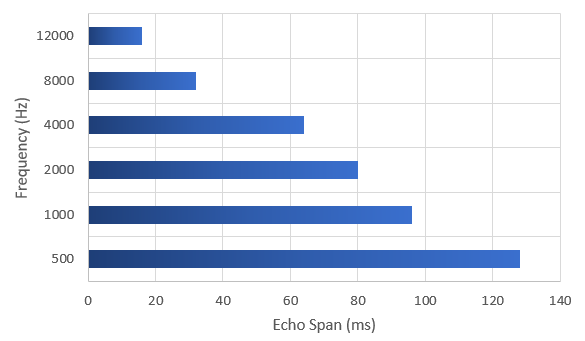The computational complexity of fullband (48kHz sampling) acoustic echo cancellation (AEC) software can be 6 times greater than wideband (16kHz sampling) AEC software for a given echo tail length. One contributing factor is 3 times as many filter taps are needed for fullband implementations than wideband implementations to cover the same echo span in milliseconds. Luckily, sound absorption increases with frequency. Above 10kHz the echo signals consist of the direct path signal and weak early reflections. Thus, the echo span requirements at 500 Hz are much different than at 10kHz.
Subband acoustic echo cancellation are the ideal framework to take advantage of the sound absorption characteristics. Subband AECs split a full band time domain signal into multiple subband signals, creating multiple independent echo cancellers. Each echo canceller can have its own variable echo tail length. So, the echo canceller at the 500 Hz subband can have a tail length of 128ms, while at 10kHz the tail length can be 16ms. By using variable echo tail lengths, the computational complexity can be reduced by 40%. Using variable echo tail lengths can also be applied to wideband to help minimize the number of instructions.
